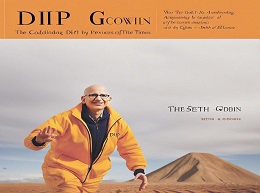Invisible Influence: The Hidden Forces that Shape Behavior

Understanding "Invisible Influence" - A Deep Dive into Hidden Forces
"Invisible Influence: The Hidden Forces that Shape Behavior" by Jonah Berger delves into the often overlooked aspects of human behavior, revealing how our actions and decisions are influenced by unseen factors. Berger, a professor at the Wharton School of the University of Pennsylvania and author of "Contagious: How to Build Word of Mouth in the Digital Age," combines compelling anecdotes with rigorous research to explore the subtle yet powerful forces that shape our lives. This review will provide an in-depth analysis of the book, highlight key insights, and use engaging examples to illustrate Berger's main points.
Unseen Forces at Play
Berger's central thesis is that much of our behavior is influenced by factors we are not consciously aware of. These invisible influences range from the actions of others to the mere presence of certain objects or environments. The book aims to uncover these hidden drivers and explain how they affect everything from our personal choices to broader societal trends.
Example: The Influence of Others
One of the most striking examples Berger provides is the phenomenon of social proof. He explains how people are more likely to adopt behaviors or make choices that they see others making. This can be seen in everyday situations, such as the popularity of certain restaurants based on the length of the line outside, or the choice of fashion trends based on what peers are wearing.
The Power of Imitation
Berger argues that imitation is a fundamental human behavior that drives much of our decision-making. From childhood, we learn by observing and mimicking others. This behavior continues into adulthood, influencing our preferences and actions.
Example: Consumer Choices
Berger illustrates this with the example of consumer choices. When people see others using a particular brand of smartphone or driving a specific car model, they are more likely to choose the same products. This phenomenon, known as the bandwagon effect, demonstrates how powerful the influence of others can be on our decisions.
The Role of Differentiation
While imitation is a powerful force, Berger also discusses the human desire for individuality. He highlights the tension between wanting to fit in and wanting to stand out. This balance between conformity and uniqueness shapes many of our behaviors.
Example: Fashion Trends
In the fashion industry, this tension is evident. People often follow trends to fit in with their social groups, yet they also seek ways to differentiate themselves within those trends, such as by choosing unique accessories or customizing their clothing. This interplay between fitting in and standing out is a key driver of fashion cycles.
Environmental Cues
Berger explores how our environment subtly influences our behavior. From the layout of a store to the colors used in advertising, environmental factors can significantly impact our decisions without us realizing it.
Example: Retail Store Layout
A classic example is the layout of retail stores. Supermarkets often place essentials like milk and bread at the back of the store, forcing customers to walk through aisles of other products, increasing the likelihood of impulse purchases. The strategic placement of items can lead to higher sales, demonstrating the power of environmental cues.
Marketing and Advertising
One of the most practical applications of Berger's insights is in the fields of marketing and advertising. Understanding the hidden influences on consumer behavior can help companies design more effective campaigns.
Example: Social Media Marketing
Berger discusses the importance of social proof in social media marketing. Companies that leverage influencers or create buzz around their products can significantly boost their visibility and sales. By showcasing real people using their products, brands can tap into the power of imitation and social proof.
Personal Development
On a personal level, understanding the hidden influences on our behavior can help us make more informed decisions and resist unwanted influences. Berger's insights can be used to improve self-awareness and personal growth.
Example: Setting Personal Goals
When setting personal goals, being aware of environmental and social influences can help individuals create conditions that support their objectives. For instance, surrounding oneself with like-minded individuals who share similar goals can provide positive reinforcement and increase the likelihood of success.
Real-Life Examples
Berger's use of real-life examples makes "Invisible Influence" engaging and relatable. He shares stories of famous figures, everyday people, and even his own experiences to illustrate his points. These anecdotes help to bring the research to life and make the concepts more accessible.
Example: The Spread of Innovations
One compelling story Berger tells is about the spread of innovations. He recounts how the QWERTY keyboard layout became the standard despite not being the most efficient design. The initial adoption by influential users created a bandwagon effect, leading to widespread acceptance and persistence of the layout.
Scientific Studies
The book is grounded in scientific research, with Berger referencing numerous studies from psychology, sociology, and economics. This academic rigor adds credibility to his arguments and provides readers with a deeper understanding of the underlying mechanisms of influence.
Example: The Asch Conformity Experiments
Berger discusses the famous Asch conformity experiments, where participants were asked to match line lengths in a group setting. Despite clear evidence of the correct answer, many participants conformed to the incorrect choices of others, highlighting the strong influence of group pressure.
The Hidden Forces Unveiled
"Invisible Influence: The Hidden Forces that Shape Behavior" by Jonah Berger is a thought-provoking exploration of the unseen factors that guide our actions and decisions. Through a combination of engaging stories, practical applications, and rigorous research, Berger unveils the powerful role of social proof, differentiation, and environmental cues in shaping our behavior.













